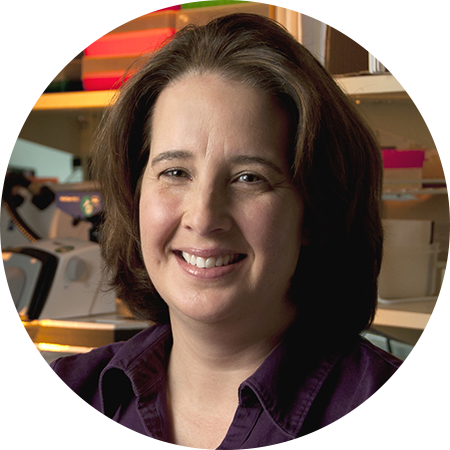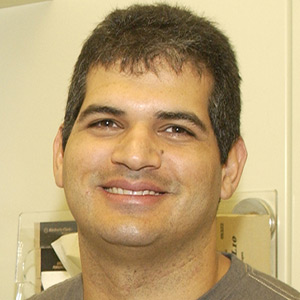Zhang T, Choi J, Kovacs MA, Shi J, Xu M; NISC Comparative Sequencing Program; Melanoma Meta-Analysis Consortium, Goldstein AM, Trower AJ, Bishop DT, Iles MM, Duffy DL, MacGregor S, Amundadottir LT, Law MH, Loftus SK, Pavan WJ*, Brown KM*. Cell-type-specific eQTL of primary melanocytes facilitates identification of melanoma susceptibility genes. Genome Res. Nov;28(11):1621-1635. 2018. [PubMed]
Harris ML, Fufa TD, Palmer JW, Joshi SS, Larson DM, Incao A, Gildea DE, Trivedi NS, Lee AN, Day CP, Michael HT, Hornyak TJ, Merlino G; NISC Comparative Sequencing Program, Pavan WJ. A direct link between MITF, innate immunity, and hair graying. PLoS Biol. 16(5):e2003648. 2018. [PubMed]
Crawford NG, Kelly DE, Hansen MEB, Beltrame MH, Fan S, Bowman SL, Jewett E, Ranciaro A, Thompson S, Lo Y, Pfeifer SP, Jensen JD, Campbell MC, Beggs W, Hormozdiari F, Mpoloka SW, Mokone GG, Nyambo T, Meskel DW, Belay G, Haut J; NISC Comparative Sequencing Program, Rothschild H, Zon L, Zhou Y, Kovacs MA, Xu M, Zhang T, Bishop K, Sinclair J, Rivas C, Elliot E, Choi J, Li SA, Hicks B, Burgess S, Abnet C, Watkins-Chow DE, Oceana E, Song YS, Eskin E, Brown KM, Marks MS, Loftus SK, Pavan WJ, Yeager M, Chanock S, Tishkoff SA. Loci associated with skin pigmentation identified in African populations. Science. Nov 17;358(6365). 2017. [PubMed]
Loftus SK, Baxter LL, Cronin JC, Fufa TD; NISC Comparative Sequencing Program, Pavan WJ. Hypoxia-induced HIF1α targets in melanocytes reveal a molecular profile associated with poor melanoma prognosis. Pigment Cell Melanoma Res. 30(3):339-352. 2017. [PubMed]
Chandler RJ, Williams IM, Gibson AL, Davidson CD, Incao AA, Hubbard BT, Porter FD, Pavan WJ, Venditti CP. Systemic AAV9 gene therapy improves the lifespan of mice with Niemann-Pick disease, type C1. Hum Mol Genet. 26(1):52-64. 2017. [PubMed]
Harris ML, Levy DJ, Watkins-Chow DE, Pavan WJ. Ectopic differentiation of melanocyte stem cells is influenced by genetic background. Pigment Cell Melanoma Res. 28(2):223-8. 2015. [PubMed]
Fufa TD, Harris ML, Watkins-Chow DE, Levy D, Gorkin DU, Gildea DE, Song L, Safi A, Crawford GE, Sviderskaya EV, Bennett DC, Mccallion AS, Loftus SK, Pavan WJ. Genomic analysis reveals distinct mechanisms and functional classes of SOX10-regulated genes in melanocytes. Hum Mol Genet., 24(19):5433-50. 2015. [PubMed]
Praetorius C, Grill C, Stacey SN, Metcalf AM, Gorkin DU, Robinson KC, Van Otterloo E, Kim RS, Bergsteinsdottir K, Ogmundsdottir MH, Magnusdottir E, Mishra PJ, Davis SR, Guo T, Zaidi MR, Helgason AS, Sigurdsson MI, Meltzer PS, Merlino G,Petit V, Larue L, Loftus SK, Adams DR, Sobhiafshar U, Emre NC, Pavan WJ, Cornell R, Smith AG, McCallion AS, Fisher DE, Stefansson K, Sturm RA, Steingrimsson E. A polymorphism in IRF4 affects human pigmentation through a tyrosinase-dependent MITF/TFAP2A pathway. Cell, 155(5):1022-33. 2013. [PubMed]
Cronin JC, Watkins-Chow DE, Incao A, Hasskamp JH, Schönewolf N, Aoude LG, Hayward NK, Bastian BC, Dummer R, Loftus SK, Pavan WJ. SOX10 ablation arrests cell cycle, induces senescence, and suppresses melanomagenesis. Cancer Res, 73(18):5709-18. 2013. [PubMed]
Fu R, Wassif CA, Yanjanin NM, Watkins-Chow DE, Baxter LL, Incao A, Liscum L, Sidhu R, Firnkes S, Graham M, Ory DS, Porter FD, Pavan WJ. Efficacy of N-acetylcysteine in phenotypic suppression of mouse models of Niemann-Pick disease, type C1. Hum Mol Genet, 22(17):3508-23. 2013. [PubMed]
Rodriguez-Gil JL, Larson DM, Wassif CA, Yanjanin NM, Anderson SM, Kirby MR, Trivedi NS, Porter FD, Pavan WJ. A somatic cell defect is associated with the onset of neurological symptoms in a lysosomal storage disease. Mol Genet Metab, 110(1-2):188-90. 2013. [PubMed]
Harris ML, Buac K, Shakhova O, Hakami RM, Wegner M, Sommer L, Pavan WJ. A dual role for SOX10 in the maintenance of postnatal melanocyte lineage and the differentiation of melanocyte stem cell progenitors. PLoS Genet, 9(7):e1003644. 2013. [PubMed]
Watkins-Chow DE, Cooke J, Pidsley R, Edwards A, Slotkin R, Leeds KE, Mullen R, Baxter LL, Campbell TG, Salzer MC, Biondini L, Gibney G, Phan Dinh Tuy F, Chelly J, Morris HD, Riegler J, Lythgoe MF, Arkell RM, Loreni F, Flint J, Pavan WJ, Keays DA. Mutation of the diamond-blackfan anemia gene Rps7 in mouse results in morphological and neuroanatomical phenotypes. PLoS Genet, 9(1):e1003094. doi: 10.1371/journal.pgen.1003094. 2013. [PubMed]
Xu M, Liu K, Swaroop M, Porter FD, Sidhu R, Firnkes S, Ory DS, Marugan JJ, Xiao J, Southall N, Pavan WJ, Davidson C, Walkley SU, Remaley AT, Baxa U, Sun W, McKew JC, Austin CP, Zheng W. ?-Tocopherol reduces lipid accumulation in Niemann-Pick type C1 and Wolman cholesterol storage disorders. J Biol Chem, 287(47):39349-60. 2012. [PubMed]
Gorkin DU, D Lee, X Reed, C Fletez-Brant, SL Bessling, SK Loftus, MA Beer, Pavan WJ and AS McCallion. Integration of ChIP-seq and Machine Learning Reveals Enhancers and a Predictive Regulatory Sequence Vocabulary in Melanocytes. Genome Res, 22(11):2290-301. 2012. [PubMed]
Silver DL, Watkins-Chow DE, Schreck KC, Pierfelice TJ, Larson DM, Burnetti AJ, Liaw HJ, Myung K, Walsh CA, Gaiano N, Pavan WJ. The exon junction complex component Magoh controls brain size by regulating neural stem cell division. Nature Neurosci, 13:551-558. 2010. [PubMed]
Buac K, Watkins-Chow DE, Loftus SK, Larson DM, Incao A, Gibney G, Pavan WJ. A Sox10 expression screen identifies an amino acid essential for Erbb3 function. PLoS Genet, 4:e1000177. 2008. [PubMed]
Antonellis A, Huynh JL, Lee-Lin SQ, Vinton RM, Renaud G, Loftus SK, Elliot G, Wolfsberg TG, Green ED, McCallion AS, Pavan WJ. Identification of neural crest and glial enhancers at the mouse Sox10 locus through transgenesis in zebrafish. PLoS Genet, 4:e1000174. 2008. [PubMed]
Watkins-Chow DE, Pavan WJ. Genomic copy number and expression variation within the C57BL/6J inbred mouse strain. Genome Res, (1):60-6. 2008. [PubMed]
Silver DL, Hou L, Somerville R, Young ME, Apte SS, Pavan WJ. The secreted metalloprotease ADAMTS20 is required for melanoblast survival. PLoS Genet, 29;4(2):e1000003. 2008. [PubMed]
Hou L, Arnheiter H, Pavan WJ. Interspecies difference in the regulation of melanocyte development by SOX10 and MITF. Proc Natl Acad Sci U S A, 103(24):9081-5. 2006. [PubMed]
Pollock PM, Cohen-Solal K, Sood R, Namkoong J, Koganti A, Zhu H, Robbins C, Makalowska I, Martino JJ, Shin S-S, Marin Y, Roberts KG, Yudt LM, Chen A, Cheng J, Incao A, Pinkett HW, Graham CL, Dunn K, Crespo-Carbone SM, Mackason KR, Ryan KB, Sinsimer D, Goydos J, Reuhl KR, Eckhaus M, Meltzer PS, Pavan WJ, Trent JM, Chen S. Melanoma mouse model implicates metabotropic glutamate signaling in melanocytic neoplasia. Nature Genet, 34(1):108-12. 2003. [PubMed]
Loftus SK, Larson, DM, Baxter LL, Antonellis A, Chen Y, Wu X, Bittner M , Hammer JA, Pavan WJ. Mutation of Melanosome Protein RAB38 in chocolate Mice. Proc Natl Acad Sci U S A, 99(7): 4471-4476. 2002. [PubMed]
Southard-Smith M., Angrist M., Ellison J., Agarwala R., Baxevanis A., Chakravarti A., Pavan W.J. The Sox10(Dom) mouse: modeling the genetic variation of Waardenburg-Shah (WS4) syndrome. Genome Res, 9(3): 215-225. 1999. [PubMed]
Southard-Smith EM, Kos L, Pavan WJ. Sox10 mutation disrupts neural crest development in Dom Hirschsprung mouse model. Nat Genet, 18:60-64. 1998. [PubMed]
Carstea ED, Morris JA, Coleman KG, Loftus SK, Zhang D, Cummings C, Gu J, Rosenfeld MA, Pavan WJ, Krizman DB, Nagle J, Polymeropoulos MH, Sturley SL, Ioannou YA, Higgins ME, Comly M, Cooney A, Brown A, Kaneski CR, Blanchette-Mackie EJ, Dwyer NK, Neufeld EB, Chang TY, Liscum L, Strauss JF, Ohno K, Zeilger M, Carmi R, Solkol J, Markie D, O'Neil RR, Van Diggelen OP, Elleder M, Patterson MC, Brady RO, Vanier MT, Pentchev PG, Tagle DA. The Neimann-Pick C gene: Homology to mediators of cholesterol homeostasis. Science, 277:228-231. 1997. [PubMed]
Loftus SK, Morris JA, Carstea ED, Gu JZ, Cummings C.,Brown A, Ellison J, Ohno K, Rosenfeld MA, Tagle DA, Pentchev PG, Pavan WJ. Murine model of Niemann-Pick C disease: Mutation in a cholesterol homeostasis gene. Science, 277(5323):232-235. 1997. [PubMed]
* Co-corresponding authors





